Some 20 helicopters carried the 1,300 troops into action on Exercise Wessex Storm.
British, French and American paratroopers have given a powerful demonstration of how they can go side-by-side into battle by air.

Mounting at Keevil airfield on Salisbury Plain, the Ministry of Defence say that vehicles and stores were “lifted by Royal Air Force Chinook and Puma support helicopters, protected by the sensors and weapons of Army Air Corps Wildcat reconnaissance helicopters and Apache attack helicopters”. The multinational force was dropped off to assault Imber village, capturing it to use as a base for further missions on the windswept training area.
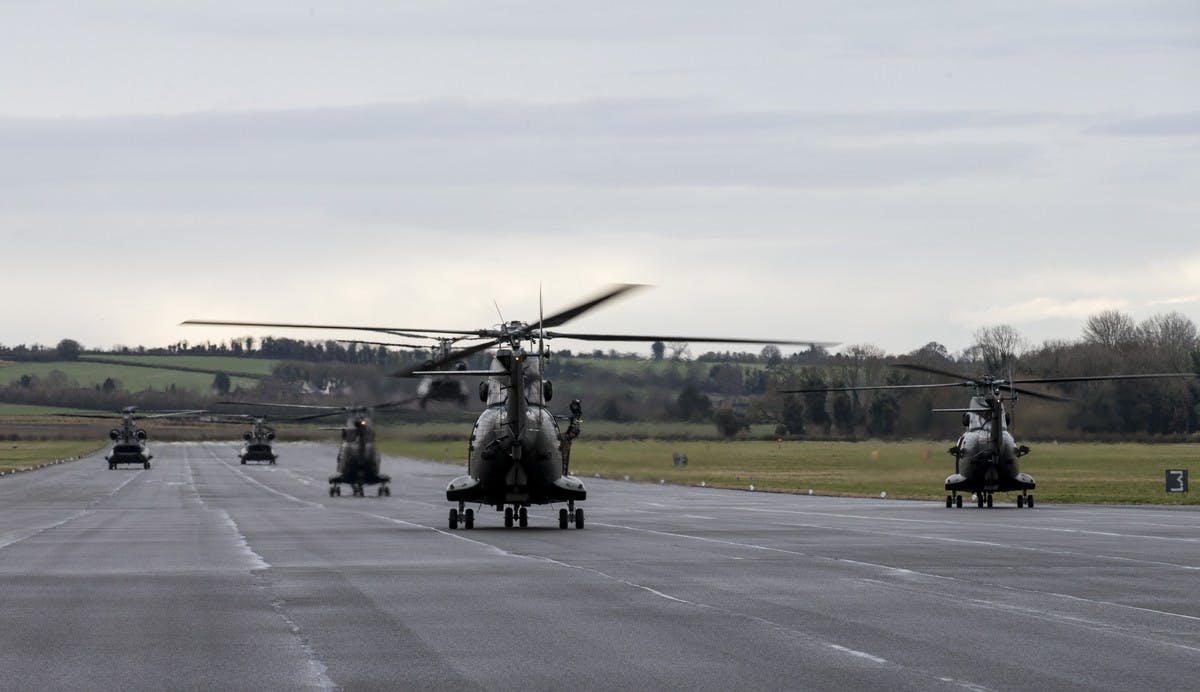
British, French and American paratroopers have given a powerful demonstration of how they can go side-by-side into battle by air.
“The training is about confirming the 2 PARA Battlegroup’s skills and readiness to serve as the lead infantry unit within 16 Air Assault Brigade, the British Army’s global response force. Some 150 troops from the French 2e Régiment Etranger de Parachutistes and a 40-strong platoon from the US Army’s 2nd Battalion, 503rd Parachute Infantry Regiment are taking part. Their involvement is about growing understanding of each other’s capabilities and tactics, meaning our airborne forces are better prepared to operate together on future operations.
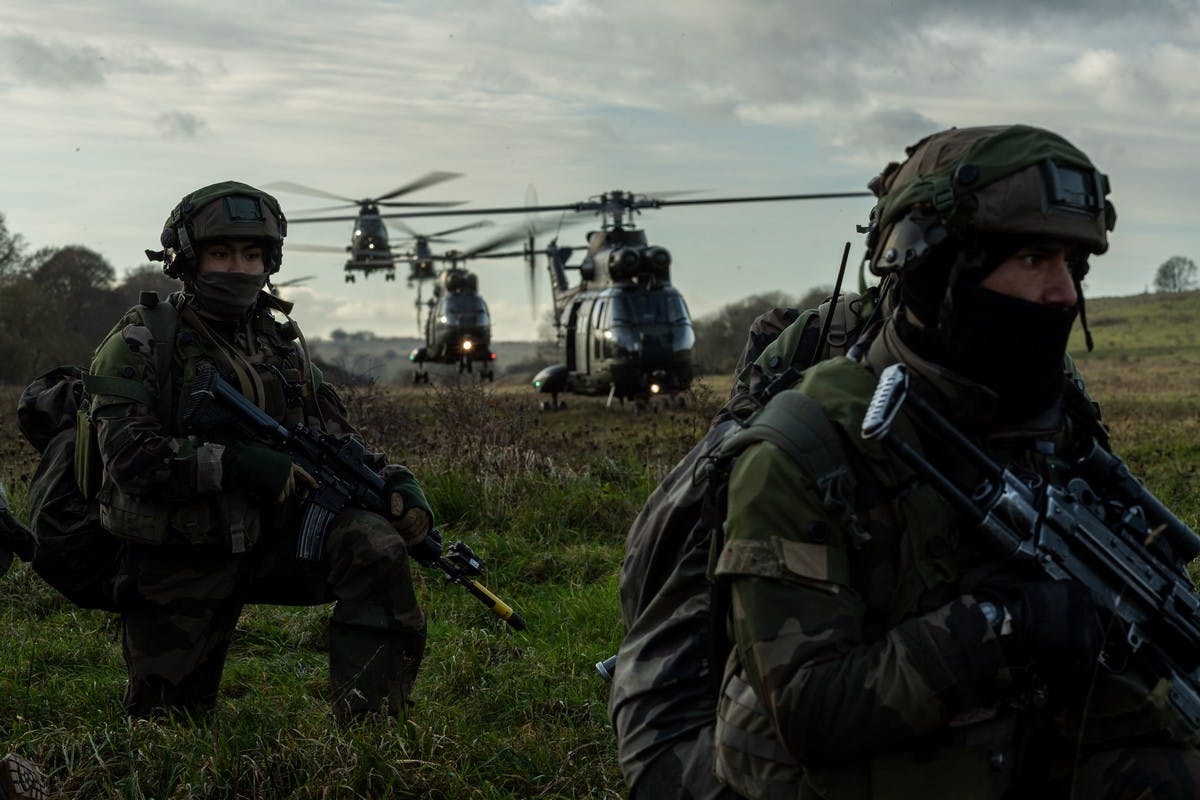
British, French and American paratroopers have demonstrated how they can go by air to battle together.
Today’s mission – the largest British-led air assault since Operation Moshtarak in Afghanistan in February 2010 – comes as the six-week long manoeuvres (2 Nov-12 Dec) reach their validation phase. The Battlegroup is being challenged to beat back the invasion of an ally by a hostile neighbour, fighting both conventional military units and militia-type forces. Before launching the air assault, troops had parachuted in to capture Keevil, with additional personnel, stores and vehicles delivered by RAF and French Armee de l’Air A400M transport aircraft.”

The British Army say that the 2 PARA Battlegroup is built around the paratroopers of Colchester-based 2nd Battalion The Parachute Regiment, supported by signallers, engineers, artillery, medics and logistics specialists from 16 Air Assault Brigade.

The forces are training to be ready to deploy at short notice on operations around the world.


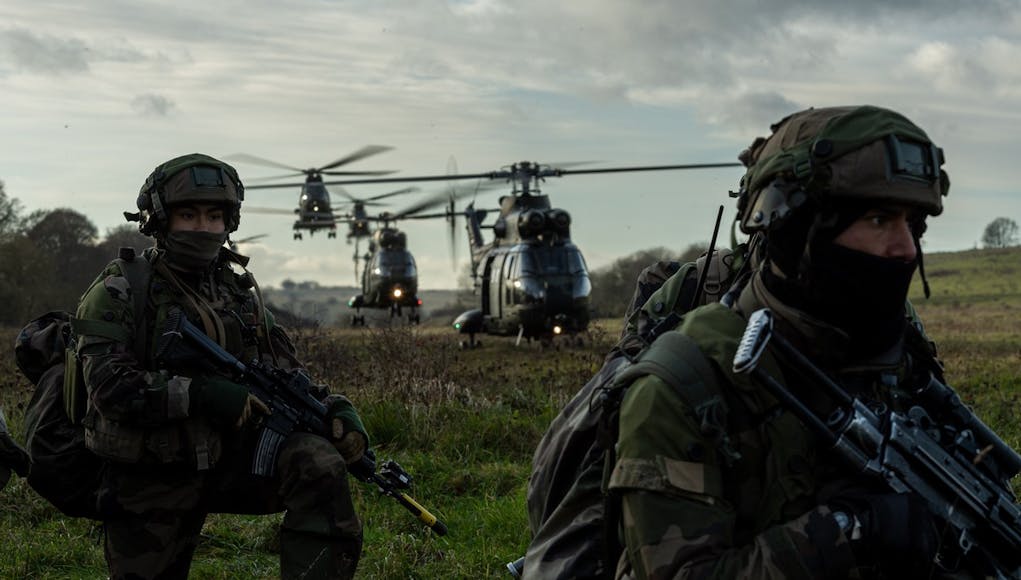






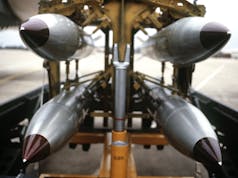

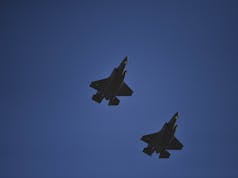


Shame about the puma needs a replacement
The UK has joined the European project for its replacement, we could see this result in a replacement of Merlin too.
https://www.defensenews.com/global/europe/2020/11/20/five-european-allies-sign-on-to-build-natos-next-medium-lift-helicopter/
I think whatever comes from that project will probably be 10-15 years after pumas osd. Plenty of off the shelf alternatives, and Merlin doesn’t need replacing plenty more development to be had from that old workhorse
The shame here is that of the five signatories, only France and Italy retain a credible helicopter design and development capability
I hope this heralds a rennaisance in 16AA.
Or at the very least arrests it’s demise.
And I dont just mean the Paras, but air landing infantry and their enablers.
I can’t see the unit being disbanded, it’s not just about the air mobile capabilities, it’s the fact that the Paras (and Royal Marines) are the Rottweilers of the British land forces.
All British infantry units are trained to a very high standard but if the British Government want to make a statement of intent somewhere, these regiments go in first.
Hear, hear!
All good points, but on the other side of the coin, air assualt/air landed/light insertion forces are only good for a short period of time. They are at the end of a long and possible easily indicted logistic chain, lack staying power and lack the ability to fight a decent peer operator with heavy armour. However saying that, a well equippped and costed Strike Bde can aleviate all those issues, but alas our Strike concept is both shit and badly equipped.
The concept of ops for 16AA is all about gaining an air head, initial drop by PF, poss a Coy level drop to secure the air head/Airfield, closely followed by Air landed troops and light vehicles. However the lack of staying power is an issue, and a window of about 72 hrs is about best can be achieved with the troops on the ground, in contact, due to the logistic issues. However in an ideal world, the Bde should have achieved its aim then been replaced by heavier follow on forces….depending on the mission. Heavy forces are an essential and irreplacable part of the ORBAT mate. Cheers.
Agree in the fact that to get an Armoured formation of any size into the theatre of ops is a horrendous logisitical task, one i doubt we can do anymore. We dont have even have enough HETs etc never mind the railway lads. But I am still a believer that Light formations need to be supported and backed up by heavy (I was light formation for 29 years lol). Armour is still essential for the shock effect, the kinetic effect and the morale effect…and to take and hold ground you need that mix of capabilites which are diverse and mutualy supporting.
Any equipment or formation is a target, any equipment can be destroyed and anyone can get killed…thats the nature of war, but we need to be able to ensure we have the correct assets in positon and enough numbers….and that includes new and innovitive systems which are coming in. We lack so much in so many areas, and while we have some excellent kit, operated by excellent people, we never have enough to ensure we have the depth to take losses and equipment failures. At the mo, in my opinion, we are a bit of a paper tiger. We have excellent capabilites that others, aside from the US, are mostly lacking, such as excellent ISTAR, RFA, Heavy Lift Heli force, AAR, RAF transport force, superb SF, Astutes (like you would prefer more) and now decent carriers. But sadly the military has been neglected (certainly the Army) and needs to take a step back, get a CDS who knows what the Army needs, and totaly re-org the Army to a more effcient Light/Strike (dont get me moaning about the current strike concept) ORBAT backed up by a smaller but more modern Armoured fist. Cheers mate.
Totally agree and being that you were from that funny lot that liked landing on their heads for fun, know all about Operation Market Garden! It was 76 tears ago, but the analogy still stands today. Without backup from heavy forces a light force will be quickly overwhelmed by an armoured mechanized force.
I think it was Napoleon who said: “wars are won and lost on logistics”! In any future war, we would be lucky to have any ammo left after two weeks of a peer versus peer conflict. The most recent conflicts in Ukraine and the latest Armenian/Azerbaijan scrap showed how far the use of small UAVs have come in supporting tactical operations. In Ukraine it has pretty much reverted to a form of trench warfare, but with both sides using electronic countermeasures to nullify the small drone threat. The Armenian/Azerbaijan scrap showed how badly one side fared, when it couldn’t compete in drone use but also electronic countermeasures. It would be interesting to see how we would fair in an divisional sized exercise against Ukraine, I’d think we’d lose, as they have more experience of operating and countering UAVs. The Heathrow drone debacle is a case in point.
This is particularly pertinent to the UK’s Armed Forces. After the massive manpower cuts in 2010. The enabling capabilities were got rid of, whereas we kept the majority of infantry units. Having front line units is all well and good, but how do they get fed and resupplied? Who sets up the comm’s networks? Who provides the electronic countermeasures? Who protects the supply routes, etc, etc? I think we have talked to death the pro’s and con’s of heavy versus strike. But my take on the subject has always been that one compliments the other. It is the same for 16AA, they were supposed to be used to blunt an armoured breakthrough, by being choppered to a point, where they would intercept the tanks with Javelin or be flown to an area behind the forward line of an enemy’s operations then wait for heavies to catch up (Hmm, ala 30 Corps!). Except the AAC has what 20 Wildcats compared to over 60 Lynx it had just recently. Why is the Wildcat so expensive, where is the battlefield taxi that modern warfare requires for mobility?
It’s about time that CDS stops pissing about and clearly defines a Armed Forces mission statement, where each branch has a call out from, i.e. The UK Armed Forces are to protect the way of life for UK citizens. From that the Army’s would be to counter any land based threat, the Navy’s would be similar to counter a sea based threat and the RAF’s would be any air based threat. These basic statements gives scope on how the mission is achieved and is simple enough for Polly the Politician to understand. Now if Army’s CONOPS involves an air mobile brigade, a strike brigade and a heavy brigade to achieve these aims, all the good, but each element must have the full logistical and enabler support embedded as part of the force, thereby making sure we have the means to achieve the mission statement.
The manpower and equipment cuts went too far in all three services on a reduced budget, which is why groups are fighting for not only justification, but also one-up-manship over another, i.e Strike vs Heavy. This infighting has to stop, otherwise we’ll end up with a half arsed concept, did I mention Strike!
DON’T MENTION STRIKE!!!! Now you’ve got me angry……lol ?. Pretty much summed up my thoughts exactly in one post.
I second Airbornes comment.
Great post.
The enablers. Never forget the enablers!
Bloody cap badge mafia.
Most of 16 air assault are based in Colchester, where I live, so we see them about pretty much every day. Chinook, Apaches, Wildcats and Pumas fly about all the time.
Always a good exercise, well at least the last part when it all comes together….